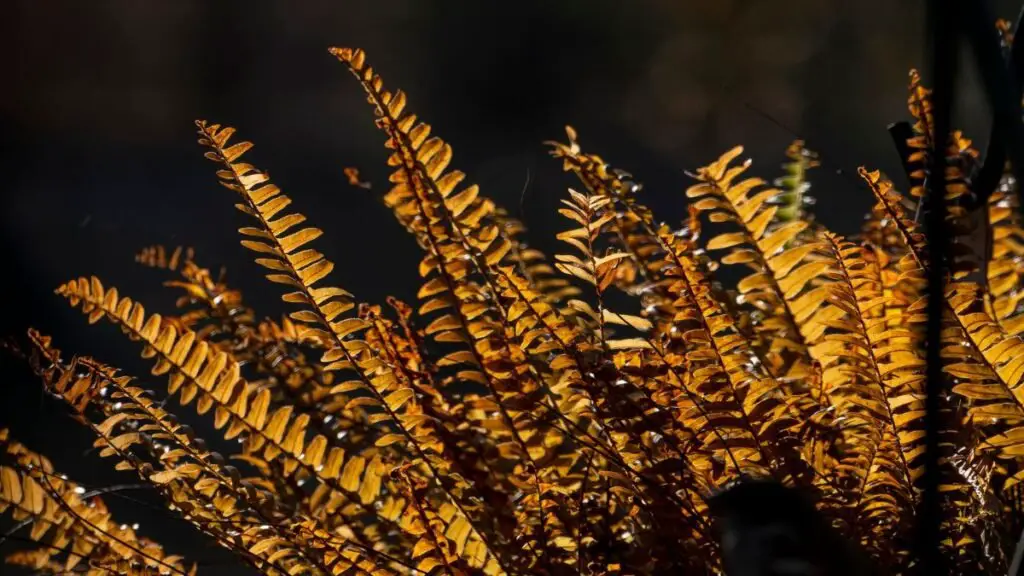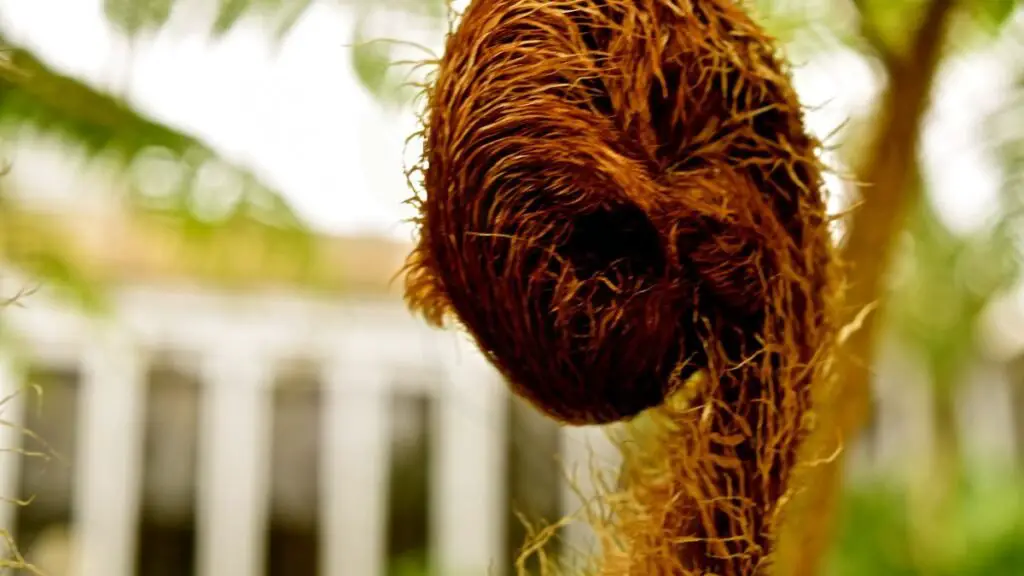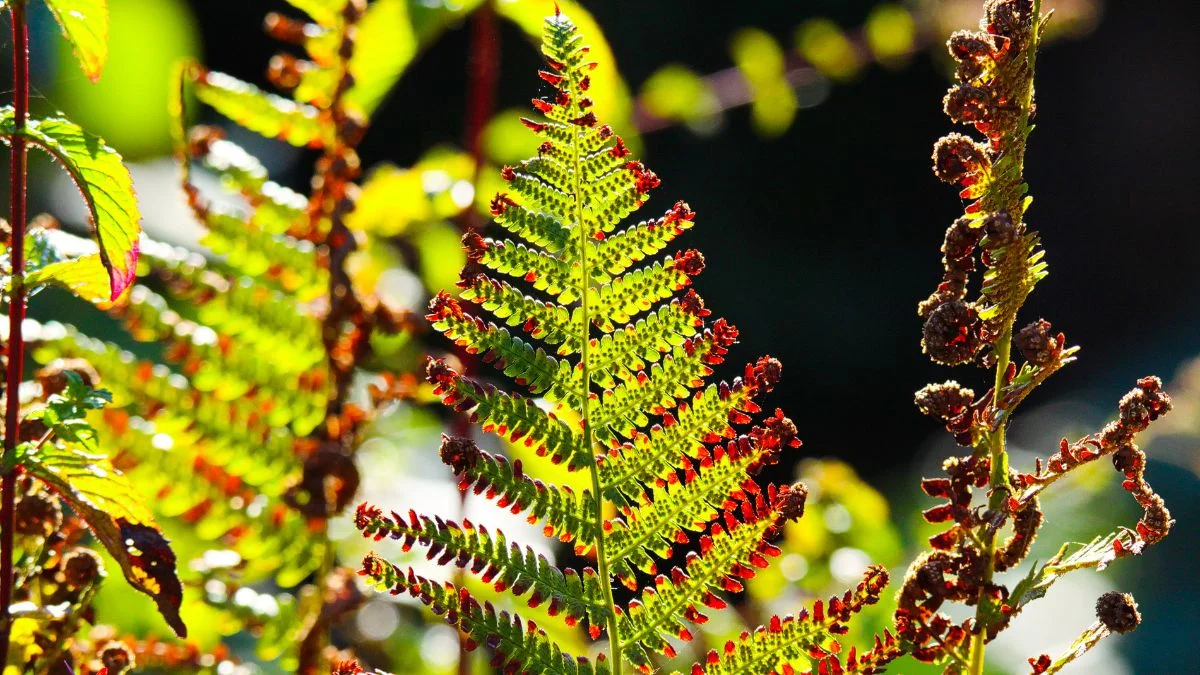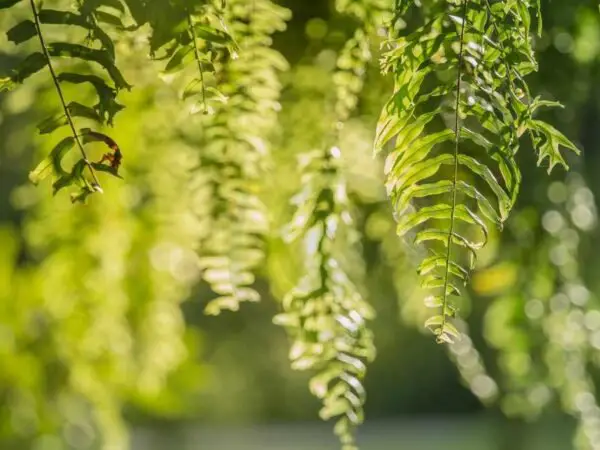If you're asking, "Why are my ferns turning brown?", you've come to the right place. Ferns can turn brown due to various reasons such as low humidity, underwatering, too much sunlight, nutrient deficiency, root rot, or disease. Understanding these factors can help you take better care of your ferns and maintain their lush green appearance.
The most common reasons for ferns turning brown are low humidity and underwatering. Ferns prefer 40% humidity, whereas indoors, the humidity is typically around 10%, which causes the leaves to lose water and turn brown. Underwatering can also cause the leaves to turn brown. Ferns should be watered thoroughly and the soil should be consistently moist (but not saturated). Too much sunlight can also cause the sensitive foliage leaves to turn brown. Ferns are native to living under woodland and forest canopy with only filtered light or full shade. High temperatures can cause the soil and foliage to dry out and turn brown.
There's so much more to learn about fern care! From understanding the right watering schedule to providing the right amount of light, each aspect plays a crucial role in maintaining the health of your ferns. Stay curious and keep learning!
Key Takeaways
- Regularly check your fern's care needs: Understanding the basics of fern care, such as proper watering and light requirements, can prevent browning issues.
- Be vigilant for distress signals: Identifying signs of distress early on can help you address problems promptly and save your foliage from browning.
- Address watering issues promptly: Overwatering or underwatering can lead to browning; adjust your watering routine based on your fern's specific needs.
- Ensure appropriate light and humidity levels: Providing the right amount of light and humidity is crucial for your fern's health and can prevent browning.
- Combat pests and diseases: Regularly inspect your fern for pests and diseases, and take immediate action to prevent browning caused by infestations.
- Revive browned ferns with care: If your fern has turned brown, follow appropriate steps like trimming dead fronds and adjusting care practices to help it recover.
Fern Care Basics
Watering Needs
Regularly check soil moisture to prevent fern dehydration. Adjust watering based on the finger dip test. Use room temperature water for hydration.
Light Exposure
Avoid direct sunlight to prevent browning. Place ferns in shaded areas for vibrant green color. Monitor ferns near windows to prevent drying.
Humidity Levels
Increase humidity through misting or relocation to a humid environment. Watch closely in dry air conditions and provide adequate moisture.
Nutrient Essentials
Maintain balanced nutrients to prevent browning. Use suitable fertilizer for health and vibrancy. Adjust nutrient application based on growth stages.
Identifying Distress Signals

Browning Fronds
Ferns develop browning fronds due to various reasons like insufficient humidity or light exposure. Trim brown fronds at the base using sharp scissors to encourage new growth. Regularly monitor fern fronds for any signs of browning to catch and address issues early. Promptly remove dead or browning fronds to maintain the overall health of your fern plant.
Drooping Leaves
Drooping fern leaves indicate a problem with soil moisture levels. Check the soil moisture by inserting your finger into the soil; if it feels dry, it's time to water. Adjust the watering frequency based on the soil's dryness to help revive drooping leaves. Ensure proper drainage in the pot to prevent waterlogging, which can lead to drooping and other issues.
Dry Soil
Dry soil is a common issue that can cause ferns to turn brown. To remedy this, rehydrate dry soil by watering thoroughly until you see water draining from the bottom of the pot. Use the finger dip test regularly to accurately gauge soil dryness and prevent overwatering or underwatering. Adjust your watering schedule accordingly to maintain optimal soil moisture levels for healthy fern growth.
Reasons for Browning
Over-Watering
Over-watering can lead to brown tips on ferns. To prevent this issue, reduce watering frequency and let the soil dry slightly between waterings. Keep a close eye on your fern's health for any signs of over-watering.
Under-Watering
If you notice your ferns turning brown due to under-watering, increase the watering frequency. Ensure that your ferns receive adequate water to avoid dehydration. Look out for wilting or dryness as clear indicators of under-watering.
Low Humidity
Low humidity levels can contribute to browning in ferns. Boost the humidity around your plants by creating a more humid environment for them to thrive. Regularly check your ferns for any distress signals in low humidity conditions.
Nutrient Deficiency
Nutrient deficiencies can also cause browning in ferns. Address any nutrient deficiencies promptly by using a balanced fertilizer to provide essential nutrients to your plants. Keep an eye on your fern's growth patterns for any signs of nutrient deficiency.
Addressing Watering Issues
Correct Frequency
Adjust watering frequency based on fern species and environmental conditions. Follow a consistent schedule to keep ferns healthy. Monitor their response to watering changes for the right frequency.
Proper Techniques
Use appropriate watering techniques to prevent browning in ferns. Avoid over-watering by watering at the plant's base. Prune ferns correctly for healthy growth and to prevent browning.
Managing Light and Humidity

Ideal Light Conditions
Ferns thrive in indirect light settings, promoting healthy growth without browning issues. Avoid direct sunlight exposure to prevent ferns from turning brown. Regularly check how ferns react to light levels for necessary adjustments.
Humidity Solutions
Enhance fern health by introducing humidity solutions such as misting or pebble trays. These methods create a conducive environment for ferns to flourish. Keep a close eye on fern well-being post-application of humidity solutions.
Combatting Pests and Diseases
Common Pests
Spider Mites
- Check ferns regularly for spider mite infestations to prevent browning.
- Promptly treat any spider mite issues to avoid further damage.
- Eliminate spider mites using natural or chemical remedies effectively.
Mealybugs
- Look for mealybug presence on fern leaves and stems during inspections.
- Treat mealybug infestations promptly to prevent browning of the ferns.
- Eradicate mealybugs using appropriate methods to protect the plants.
Diseases Treatment
Fungal Infections
- Keep an eye on ferns for signs of fungal infections like leaf spots.
- Promptly treat fungal infections to prevent browning and maintain plant health.
- Adjust watering practices to reduce fungal growth on the ferns effectively.
Bacterial Issues
- Watch out for bacterial infections in ferns, which may cause yellowing or browning.
- Treat bacterial problems promptly to prevent further damage to the plants.
- Use suitable fungicides or bactericides to address bacterial issues effectively.
Reviving Browned Ferns
Pruning Brown Leaves
Trim brown leaves at the base to encourage new growth. Remove dead or browning leaves promptly for fern health. Prune carefully to prevent further damage during trimming.
Adjusting Care Routine
Modify care routine based on fern response to environmental conditions. Monitor fern health closely for necessary adjustments. Implement changes gradually to prevent stress on ferns.
Recovery Signs
Look for signs of recovery in ferns post addressing browning issues. Monitor new growth and leaf color for improvements. Continue proper care practices to support fern recovery.
Preventive Measures and Maintenance
Regular Monitoring
Regularly monitor fern health to catch browning early. Check soil moisture, leaf color, and overall plant condition often. Implement preventive actions based on monitoring results.
Keep an eye on your ferns by checking soil moisture levels frequently. Ensure the soil is damp but not waterlogged to prevent browning. Adjust watering accordingly.
Inspect the leaf color of your ferns regularly. Healthy fern leaves are vibrant green; any signs of browning indicate issues that need attention promptly.
Based on your monitoring observations, take proactive steps to maintain your fern's health and prevent browning from worsening.
Seasonal Adjustments
Adjust care routines according to seasonal changes to keep your ferns healthy. Monitor how your ferns respond to these changes and make necessary adjustments promptly.
Prepare your ferns for seasonal transitions by gradually acclimating them to new conditions. This helps prevent stress-induced browning during environmental shifts.
Observe how your ferns react to seasonal changes such as temperature fluctuations or sunlight variations. Adapt their care regimen as needed to avoid browning issues.
Closing Thoughts
Maintaining healthy ferns requires attention to detail. By understanding the signs of distress, addressing watering needs, managing light exposure, combating pests, and following proper care routines, you can revive your browning ferns and prevent future issues. Remember to stay vigilant in monitoring your plants and taking proactive measures to ensure their well-being.
Incorporate the tips provided in this guide into your fern care routine to promote lush greenery and vibrant foliage. Share your newfound knowledge with fellow plant enthusiasts to create a community of thriving indoor gardens. Your dedication and efforts will be reflected in the flourishing beauty of your ferns. Keep nurturing your plants with care and watch them thrive!
Frequently Asked Questions
Why do ferns turn brown?
Ferns can turn brown due to various reasons such as overwatering, underwatering, low humidity, or inadequate light exposure. It is essential to identify the specific cause to address the browning effectively.
How can I revive my browned fern?
To revive a browned fern, assess its watering schedule, humidity levels, and light exposure. Trim off dead fronds, repot if necessary, and ensure proper care moving forward to help the fern recover.
What are preventive measures for browning ferns?
Prevent browning in ferns by maintaining appropriate watering levels, providing adequate humidity and indirect light, ensuring good air circulation around the plant, and regularly inspecting for pests or diseases.
Can pests cause ferns to turn brown?
Yes, pests like spider mites or scale insects can infest ferns, leading to browning of leaves. Regularly inspect your fern for any signs of pests and take appropriate measures such as using insecticidal soap to combat them.
How important is proper watering for fern health?
Proper watering is crucial for fern health as both overwatering and underwatering can result in browning of fronds. Establish a consistent watering routine based on the specific needs of your fern species to maintain its lush green appearance.
Image Source: Paid image from CANVA





